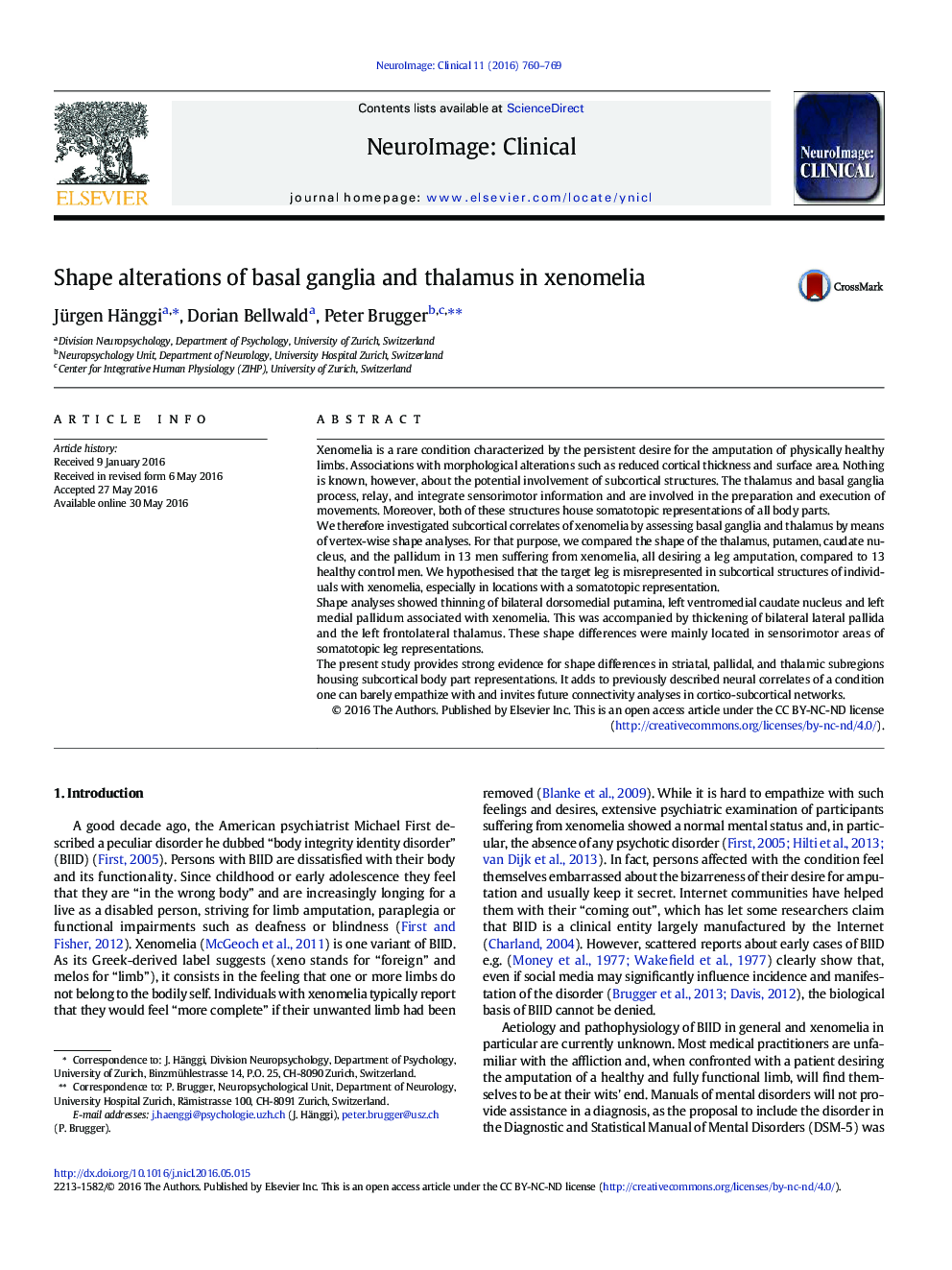| کد مقاله | کد نشریه | سال انتشار | مقاله انگلیسی | نسخه تمام متن |
|---|---|---|---|---|
| 3074967 | 1580956 | 2016 | 10 صفحه PDF | دانلود رایگان |
• Local subcortical tissue displacement can be measured with shape analysis.
• Thinning of bilateral dorsomedial putamina in xenomelia compared with controls
• Thinning of left ventromedial caudate nucleus and medial pallidum in xenomelia
• Thickening of bilateral lateral pallida and left frontolateral thalamus in xenomelia
• Tissue displacements in regions with somatotopic representations of body parts
Xenomelia is a rare condition characterized by the persistent desire for the amputation of physically healthy limbs. Associations with morphological alterations such as reduced cortical thickness and surface area. Nothing is known, however, about the potential involvement of subcortical structures. The thalamus and basal ganglia process, relay, and integrate sensorimotor information and are involved in the preparation and execution of movements. Moreover, both of these structures house somatotopic representations of all body parts.We therefore investigated subcortical correlates of xenomelia by assessing basal ganglia and thalamus by means of vertex-wise shape analyses. For that purpose, we compared the shape of the thalamus, putamen, caudate nucleus, and the pallidum in 13 men suffering from xenomelia, all desiring a leg amputation, compared to 13 healthy control men. We hypothesised that the target leg is misrepresented in subcortical structures of individuals with xenomelia, especially in locations with a somatotopic representation.Shape analyses showed thinning of bilateral dorsomedial putamina, left ventromedial caudate nucleus and left medial pallidum associated with xenomelia. This was accompanied by thickening of bilateral lateral pallida and the left frontolateral thalamus. These shape differences were mainly located in sensorimotor areas of somatotopic leg representations.The present study provides strong evidence for shape differences in striatal, pallidal, and thalamic subregions housing subcortical body part representations. It adds to previously described neural correlates of a condition one can barely empathize with and invites future connectivity analyses in cortico-subcortical networks.
Journal: NeuroImage: Clinical - Volume 11, 2016, Pages 760–769
